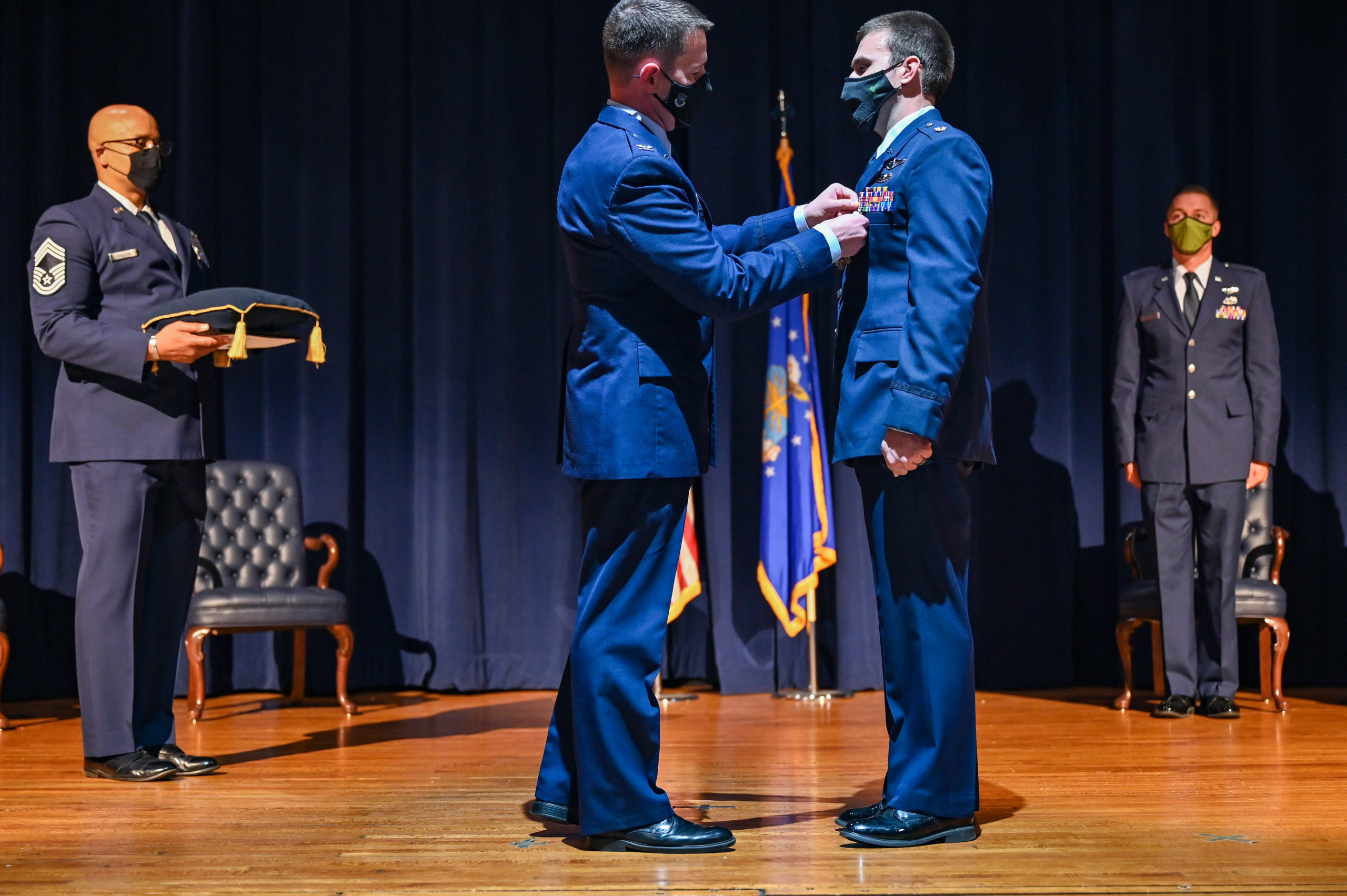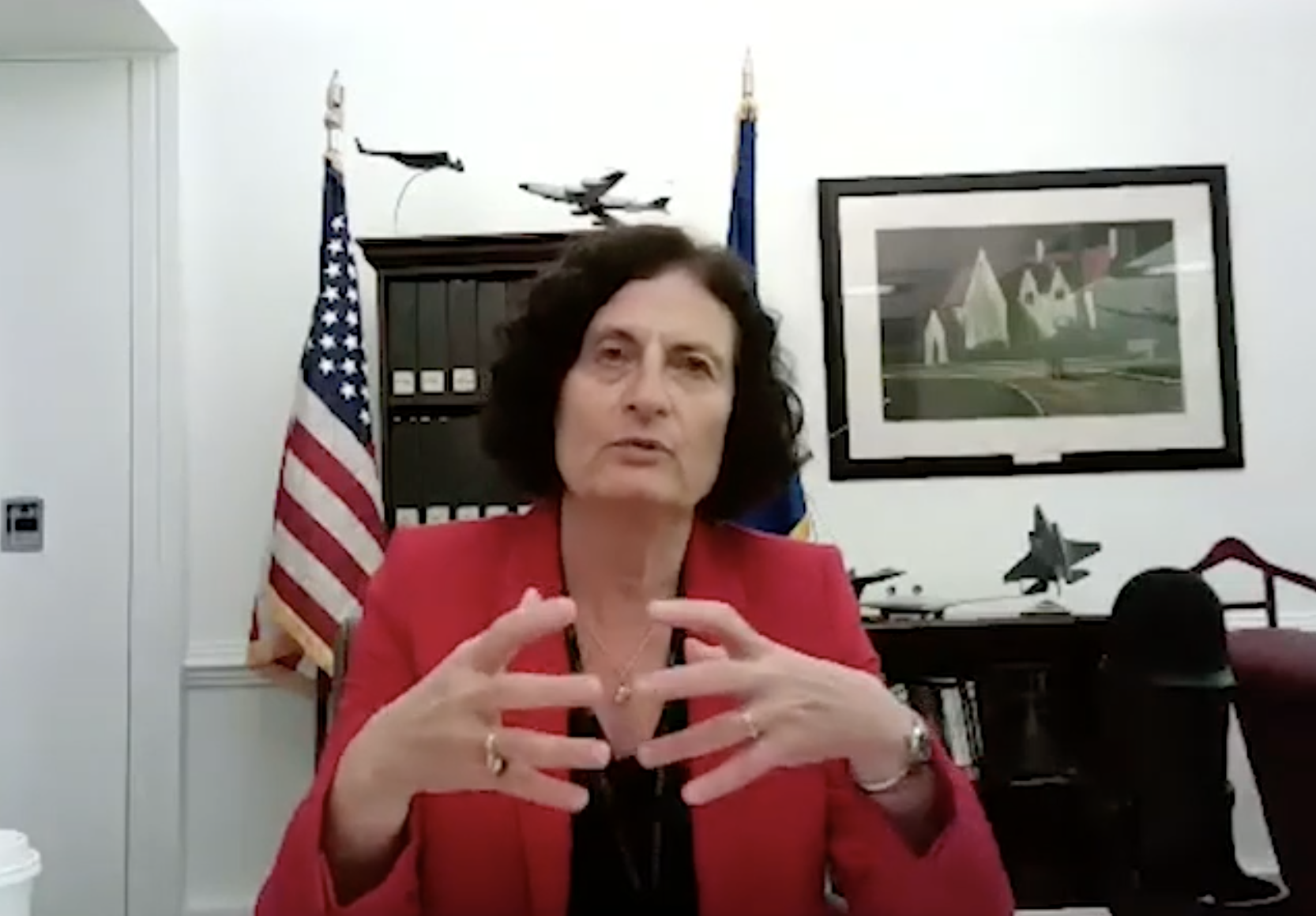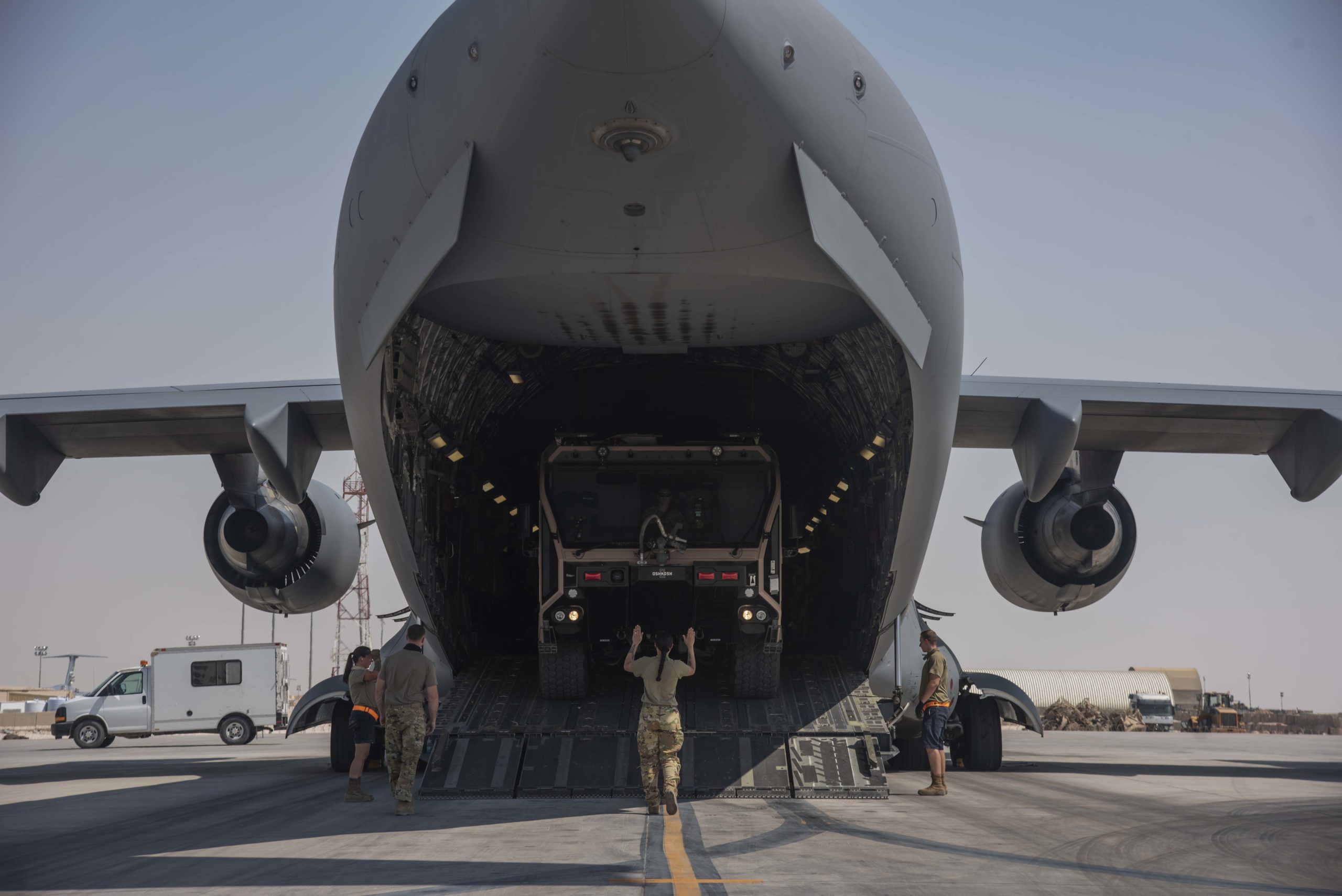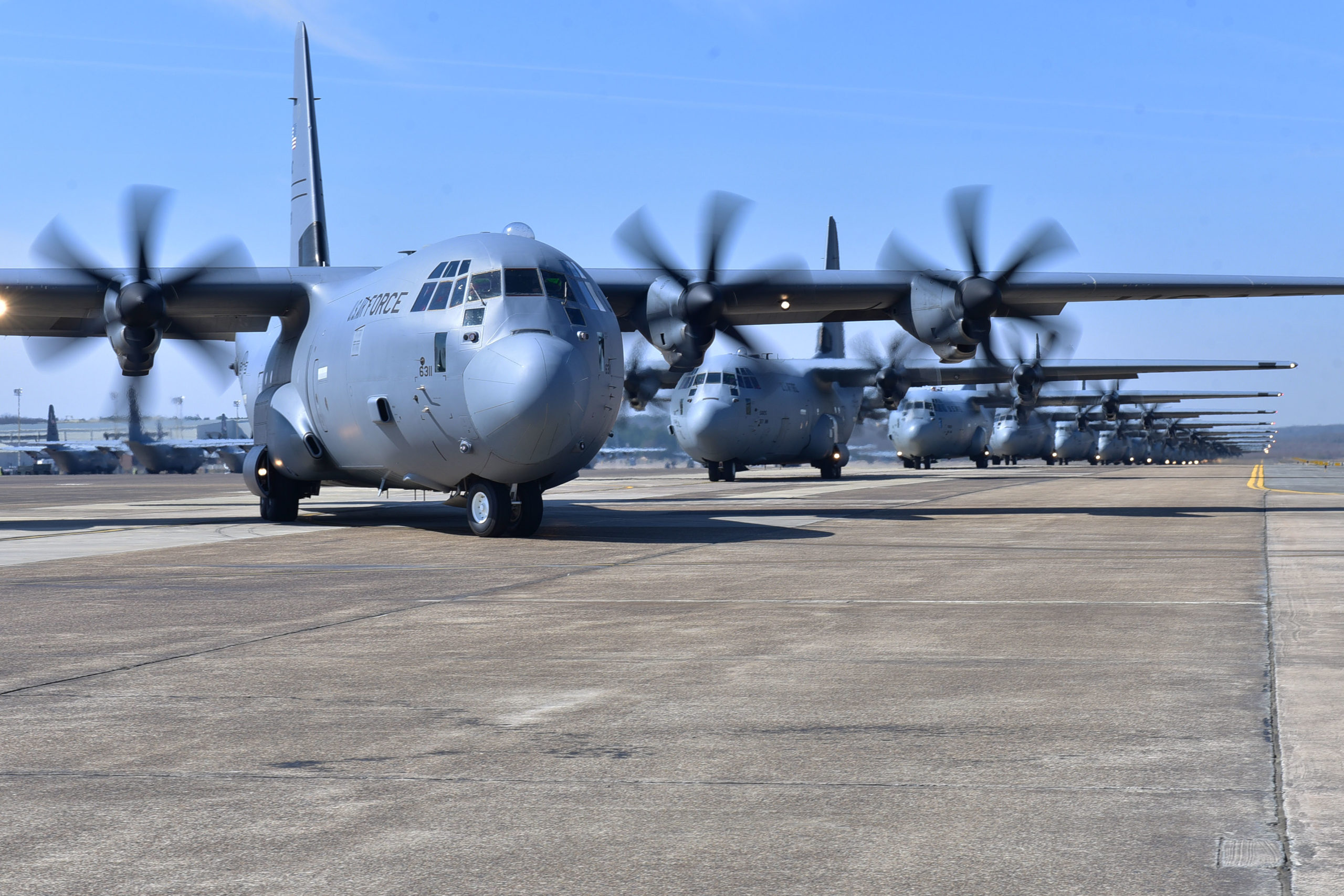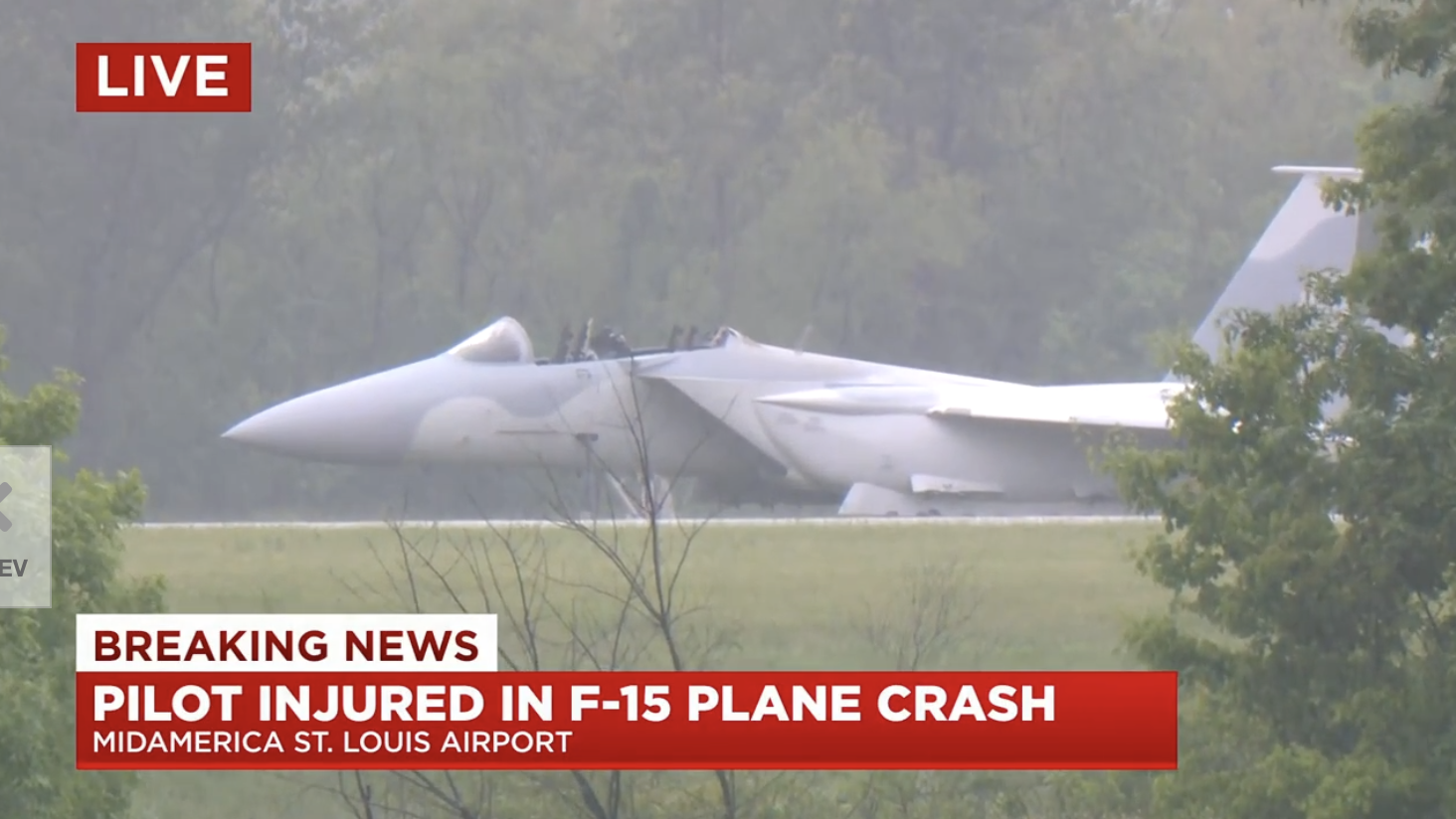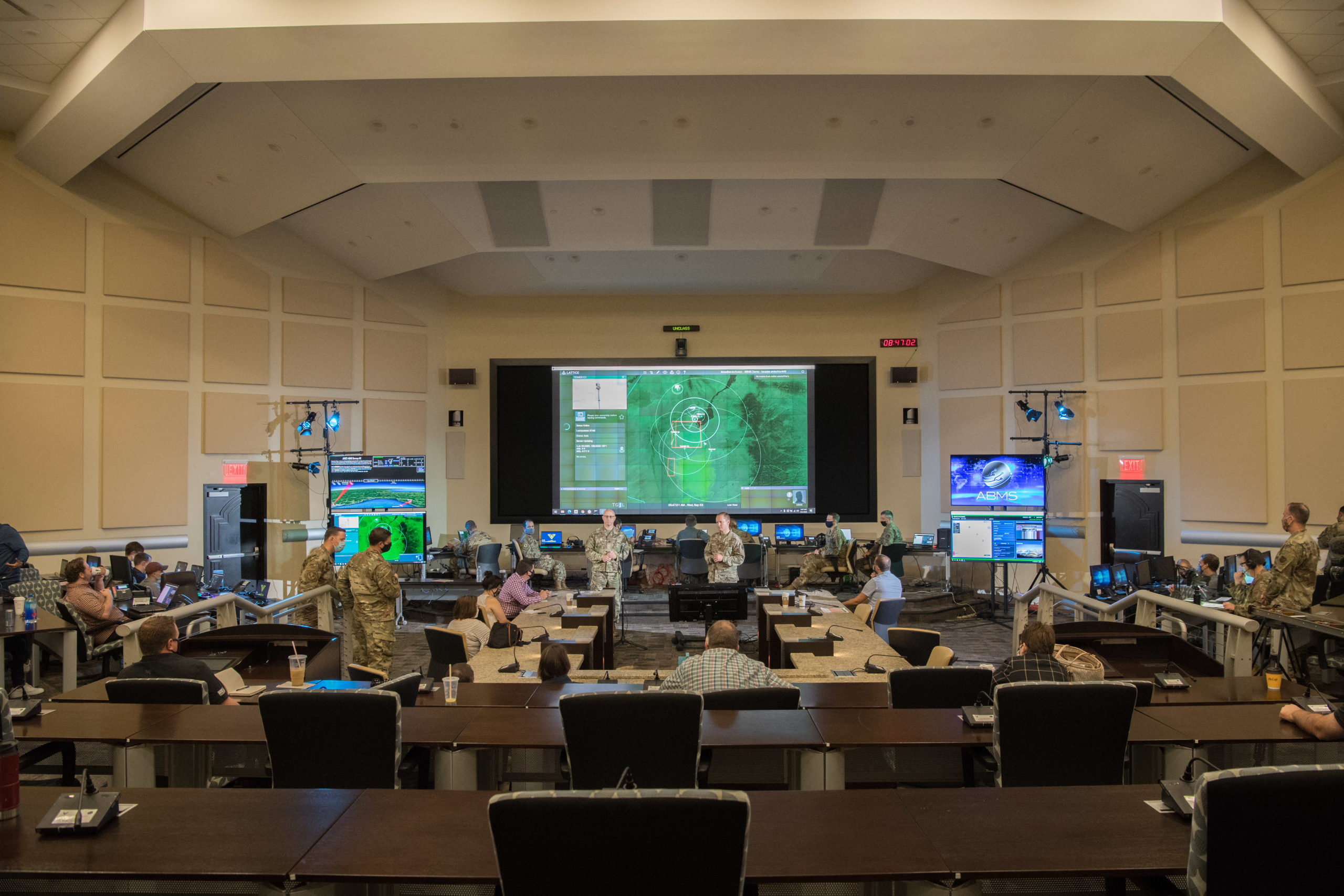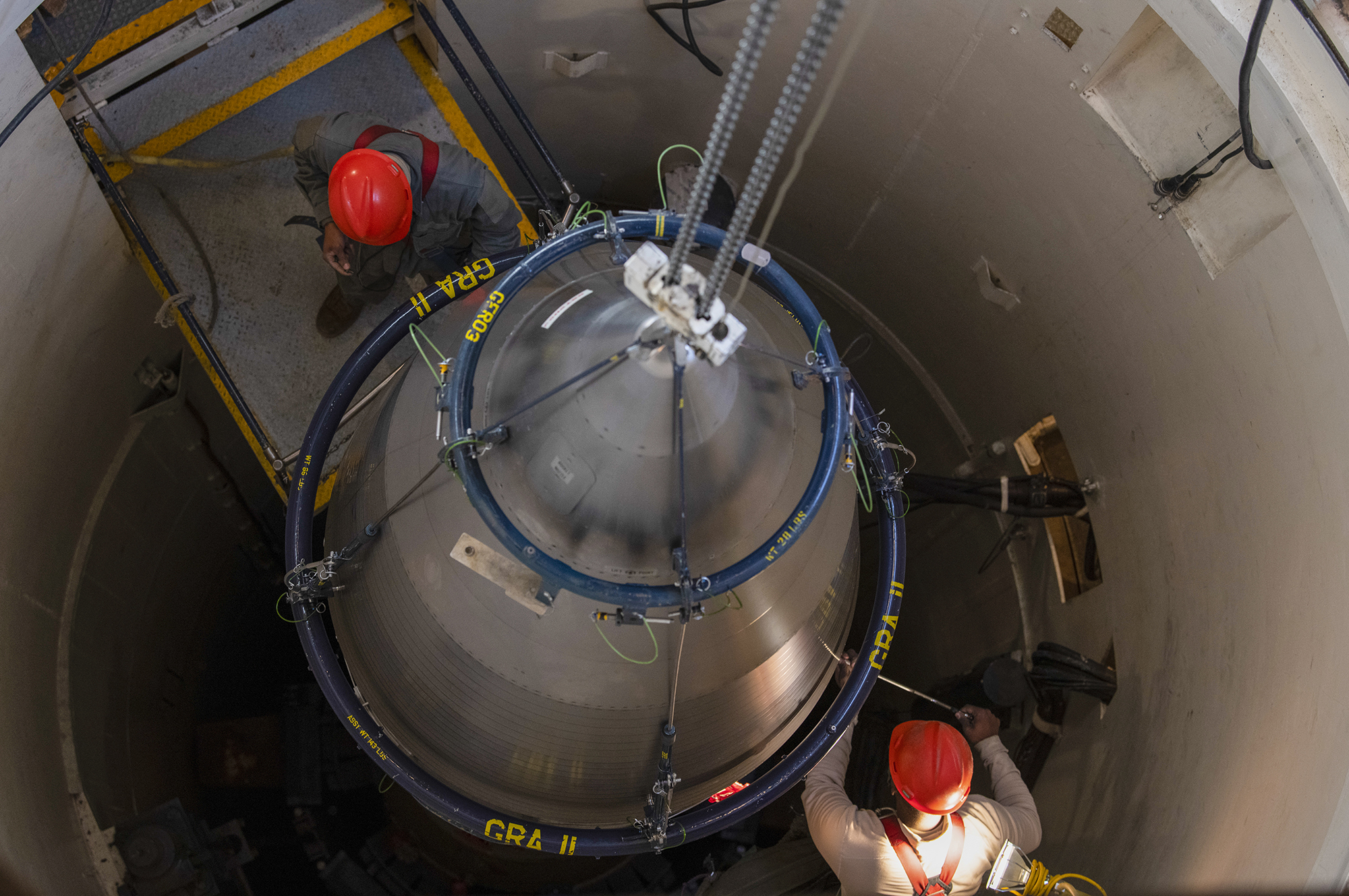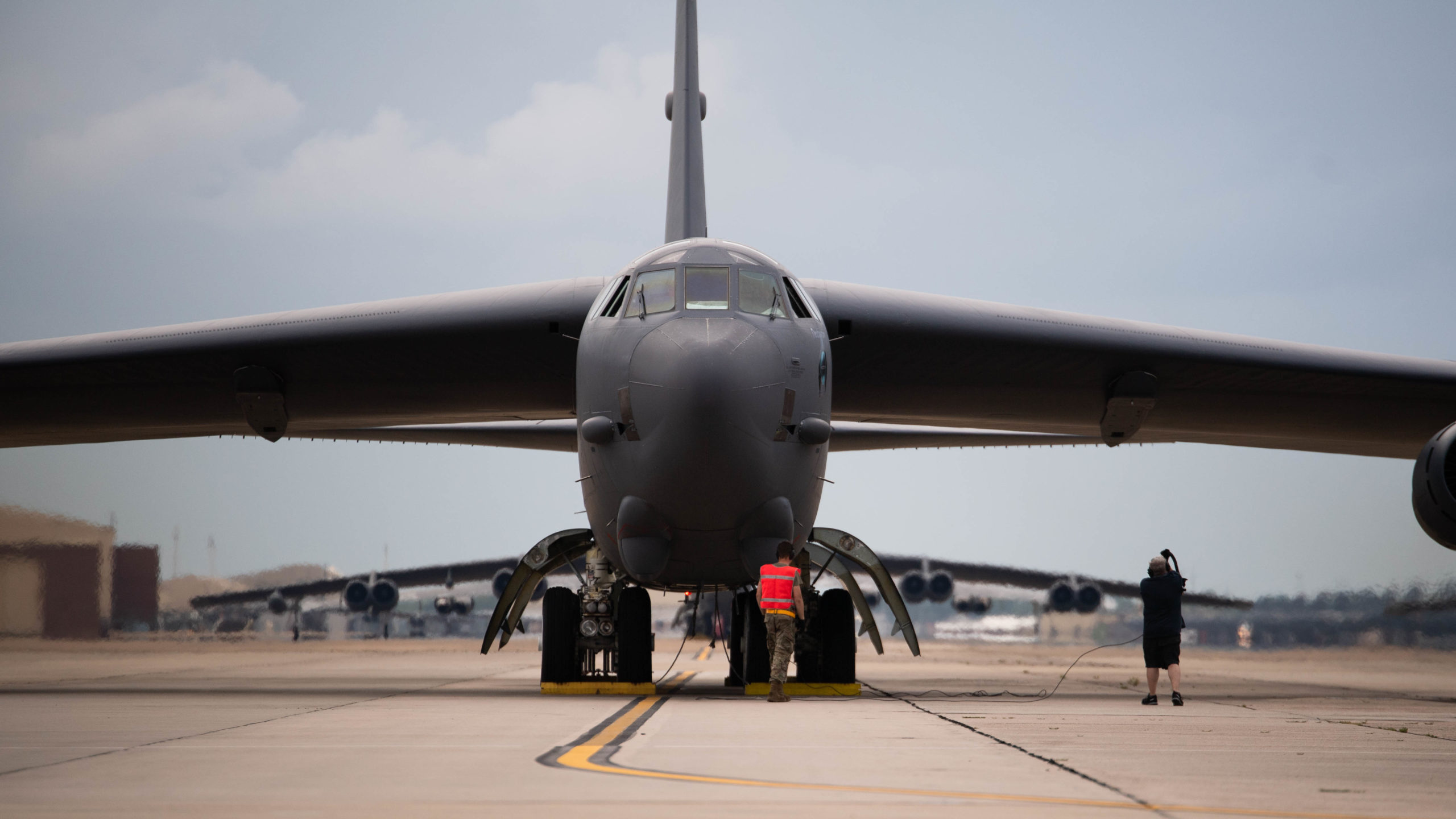A C-130J pilot received the Distinguished Flying Cross while another pilot and two loadmasters received Air Medals on May 10 for their actions last September in Afghanistan, when their aircraft took enemy fire, injuring one on board and damaging the aircraft’s controls.
After getting hit, the team returned to base, loaded another C-130J, and the remaining aircrew finished the mission.
“Receiving the DFC was extremely humbling,” said Maj. Christopher Richardson, 61st Airlift Squadron pilot, in a release. “As aviators, we put a lot of time and effort into making sure everything goes as planned—sometimes that isn’t how it works out.”
On Sept. 19, 2020, the team was deployed from Little Rock Air Force Base, Arkansas, to Bagram Airfield where they were supporting the ingress of a Theater Response Force to a forward operating base in Afghanistan. During the approach, the C-130 received effective enemy fire, which injured one of the aircrew.
Senior Airman Dimitrious Carden, the loadmaster on the flight, worked with the onboard combat control team to apply self-aid buddy care.
“I knew what I needed to do and how to do it,” Carden said in the release. “I remember quite clearly being able to think back to times spent practicing for these types of events and using that to guide my actions.”
Richardson tried to make another approach to the FOB, but the aircraft’s flight controls malfunctioned because of the small arms fire and he decided to return to Bagram.
“For me, it was a continual balancing of priorities,” Richardson said in the release. “First, was to get the crew and the plane out of harm’s way. Second, was assessing if the mission was worth the risk. If you are an expert at your job, you’ll know what to do in a stressful situation. Knowing where your efforts fit into the mission allows you to assess the risk of what’s happening and work as a team to get the job done.”
At the May 10 ceremony at Little Rock, Richardson received the DFC, while his fellow pilot, 1st Lt. Christian Grochowski, and two loadmastser, Carden and Staff Sgt. Jade Morin, received Air Medals.
“I certainly would not have succeeded alone. We all worked together and relied on each other that night,” Carden said in the release. “Everybody on that plane played a significant role in carrying out the mission and bringing everyone home safely.”
